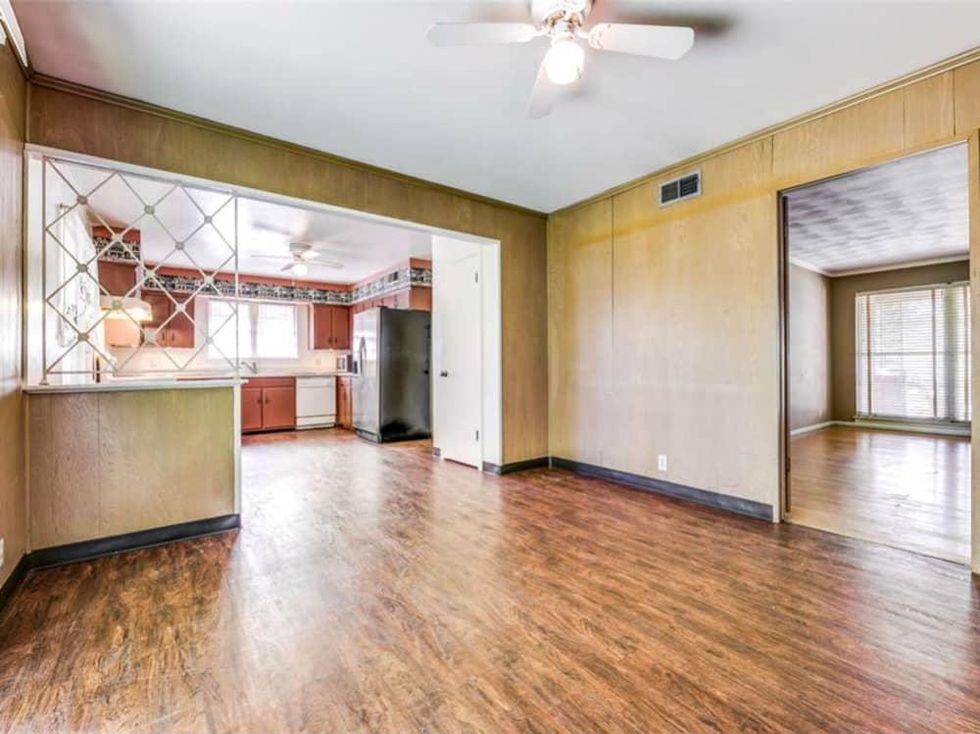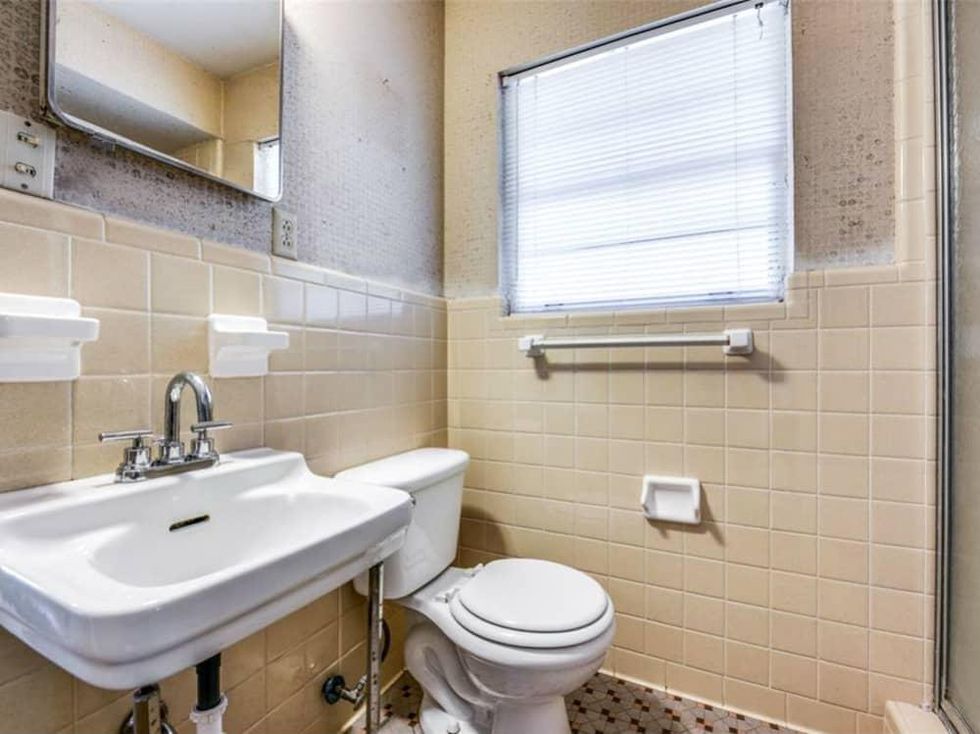House For Sale
50s house in NE Dallas basks in original, affordable vintage glory
A Dallas house is for sale that represents the kind of opportunity some discriminating buyers want: a home built in the '50s that's still intact, not updated, and not outrageously expensive.
It's a three-bedroom two-bath home at 11026 Cotillion Dr., built in 1958, with 1,284 square feet, a modest size by the standards of Dallas, where we are spoiled with space.
The house is going for $175,000, below the $200K threshold that indicates a bargain these days.
The description says it's move-in ready, with mid-century qualities that complement its charm and character, and bathrooms that are "vintage fun."
There are two original bathrooms, one with tan tile, the other green. The green bathroom has green paint, and some walls have wallpaper, not everyone's taste, but these are cosmetic items that someone in the market for this kind of house would likely take in stride.
The home has all original hardwood floors, plus a number of other features that vintage fans would enjoy.
For example:
- 50s ceramic tile on the entryway/foyer floor
- Prototypical telephone nook in the hallway
- Bookshelf cut-out in the den
- A cool screen room divider inset at the entrance
- A cool metal divider between the kitchen and the den
- Geometric iron posts on the front door facade
There's wood paneling in the den/dining room that needs to be cleaned up in a few places; some questionable wallpaper in the kitchen; and some cracking lines around the windows in one of the bedrooms, meaning the foundation probably shifts during the winter.
One of the bedrooms has a cedar-lined closet, a real bonus.
It comes with a 2-car garage, which is common in this neighborhood, plus a big backyard, gardens, and a tool shed for mower and additional tools.
It's located in the Saint Andrews neighborhood in the very northeast corner of Dallas, close to the Dallas Athletic Club, and accessible to DFW, 635, and I 30.
The house has an open floorplan wih a kitchen that opens onto a den and dining room, with a separate living area through the doorway. There's wood paneling on the walls which sites like Curbed recommend keeping as is.






